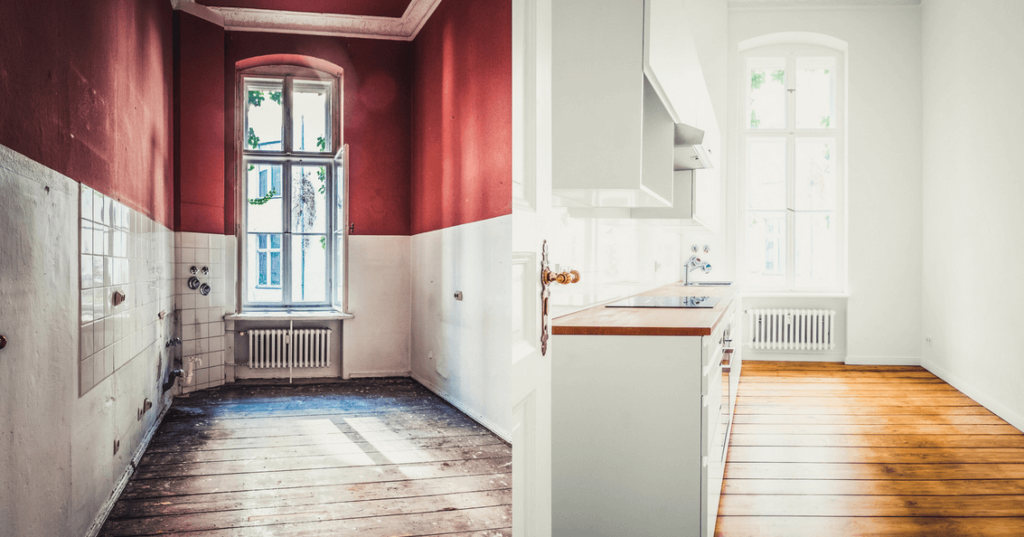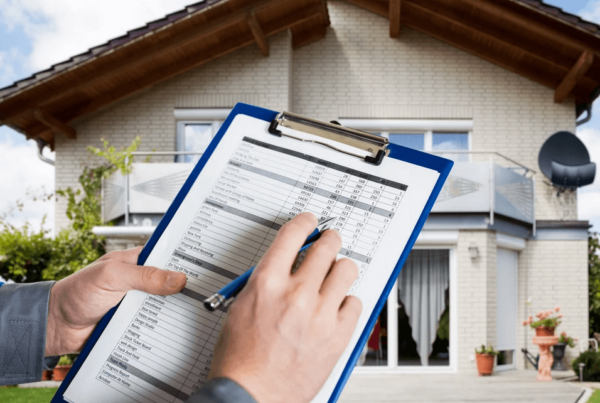A Guide to Home Restoration
Welcome to our comprehensive guide to home restoration. This resource will equip you with the knowledge and confidence to undertake your home improvement journey. Whether you’ve recently acquired an old house that needs a significant overhaul or restoring damage or are aiming to revamp your living space, this guide is for you. We’ll walk you through the process, from initial planning to executing everyday restoration tasks, ensuring you can breathe new life into your home while preserving its charm and character.
Understanding Home Restoration
Before diving into the process, it’s essential to understand what home restoration entails. Unlike remodeling, which often involves significant structural changes, home restoration aims to preserve and enhance the original features of a home. It involves repairing or replacing old elements with materials that match the original as closely as possible.
Benefits of Restoration vs. Remodeling
Choosing to restore rather than remodel can have many tangible and intangible benefits. One of the significant advantages is value appreciation. Historical or older homes that retain their original charm and characteristics are often in high demand, potentially increasing their market value. This appreciation can make restoration a financially savvy decision for homeowners.
From an environmental perspective, property restoration after fire damage, natural disasters, or water damage is often a more sustainable choice. Instead of completely destroying and disposing of damaged areas, they can be restored, reducing waste in landfills. Restoration also minimizes the need for new construction materials, reducing the project’s environmental footprint.
Lastly, there’s an undeniable allure to original features that modern remodelling can’t replicate. Original woodwork, vintage fixtures, and historical architectural elements add a unique charm and character to the home. Restoring these features allows homeowners to maintain a connection with the home’s history and the stories it holds, enhancing its aesthetic appeal and creating a warm, inviting living space.
Identifying Areas That Need Work
Start by conducting a thorough assessment of your property. Look for signs of wear and tear, such as peeling paint, crumbling plaster, or damaged flooring. Remember to inspect the plumbing and electrical systems, as outdated infrastructure can lead to costly repairs.
Common Issues in Old Homes
When restoring an older home, you may encounter several common issues. These problems, if not addressed promptly, can lead to more severe damage. Here are some issues to look for:
- Termite Damage: Termites are silent destroyers of homes, often causing significant damage before their presence is detected. Look for signs of wood that sound hollow when tapped, discarded wings, or visible mud tubes around the property’s foundation.
- Deteriorating Roofs: Older homes may have roofs nearing the end of their lifespan. Signs of a deteriorating roof can include missing or curling shingles, leaks, or a sagging structure.
- Mold: A common problem in old homes due to poor ventilation or leaks. It can cause structural damage to the house and pose health risks. Look for signs of discoloration on walls, a musty smell, or ongoing respiratory issues among occupants.
- Foundation Problems: A home’s foundation can shift over time, leading to structural issues. Signs to watch out for include cracks in walls, doors that won’t close correctly, or uneven flooring.
- Outdated Insulation: Older homes often have insufficient or outdated insulation, leading to higher energy costs. You might notice varying temperatures in rooms, drafts, or high heating and cooling bills.
Assessment Tools and Techniques
To properly assess the structural integrity and general health of your home, various tools and techniques are available to homeowners:
- Moisture Meter: This tool helps detect hidden water leaks or moisture content in materials. Moisture is a common cause of mould growth and structural decay. Therefore, a moisture meter is invaluable for identifying problems before they escalate into expensive repairs.
- Infrared Thermometers: These tools can detect drafts or insulation issues. By simply pointing the device at a wall or window, you can measure surface temperatures and identify any temperature variations that may indicate poorly insulated areas.
- Inspection Camera: This tool is handy for those hard-to-reach areas such as behind walls or under floors. An inspection camera can help you spot signs of termite infestation, water damage, or structural issues.
- Crack Monitor: If you notice cracks in the foundation or walls, a monitor can help determine if the crack worsens over time. This device allows you to measure the changes in the crack width accurately.
- Professional Home Inspection: While DIY tools and techniques can help identify many issues, some problems require a more expert eye. Hiring a professional home inspector can comprehensively assess your property’s condition. They have specialized training and tools to detect issues that homeowners might miss.
Remember, early detection is critical to preventing severe damage and costly repairs. Regularly using these assessment tools and techniques can help keep your home safe and structurally sound.
Creating a Restoration Plan
Create a detailed restoration plan once you’ve identified the areas that need work. This should include a timeline, budget, and list of professionals you’ll need to hire. Remember, home restoration often uncovers unforeseen issues, so factor in contingency costs.
Home Restoration Budgeting Tips
Home restoration can be costly, but with proper planning and careful budgeting. Start by determining a realistic budget based on your savings and how much you’re willing to spend. Your budget should include labour costs, materials, contractor fees, permits, and a contingency fund for unexpected expenses.
Try to stick to your budget throughout the project. Research and shop for the best prices on materials and services. Don’t rush into purchasing decisions – it pays to wait for sales and discounts where possible. If the costs of specific tasks exceed your budget, see if there are less expensive alternatives or consider doing some work yourself to save on labour costs.
Choosing the Right Professionals
Finding the right professionals for your restoration project is crucial. Look for contractors specializing in restoration work and understanding historical building techniques and materials. Check their references and previous projects to ensure they fit your job correctly.
Selecting a contractor with a wealth of experience in restoration projects is pivotal. Expertise is crucial because restorations demand a precise understanding of architectural styles, traditional materials, and construction methodologies, which could differ significantly from modern practices. Contractors experienced in restoration have a keen eye for maintaining the authentic charm of the property while ensuring its structural integrity and modern functionality. They can accurately identify areas of concern, propose viable solutions, and execute them in a manner that respects the property’s original characteristics. Their experience also allows them to anticipate potential hurdles and devise preemptive strategies, saving homeowners from costly mistakes and delays. Ultimately, engaging a seasoned restoration contractor ensures that your home’s value is preserved, its structural integrity is upheld, and the restoration project is carried out efficiently and effectively.
Living in a Restored Home
Living in a restored home can bring a one-of-a-kind charm and character. However, it’s important to maintain its features through regular inspections and preventative maintenance. Restoring a home is a fulfilling but intricate process. Understanding what to expect and planning carefully can revitalize your property while preserving its allure. Explore the benefits of living in a restored home and how to maintain its charm with regular inspections and preventative maintenance.

Maintaining Your Restored Home
Maintaining a restored home demands meticulous care and regular attention to keep it in optimal condition. The following are routine checks and measures to help you protect your home against common threats.
Routine Checks
Monthly:
- Check for signs of pests like termites, rodents, or roaches.
- Inspect plumbing for leaks.
- Clean the gutters and downpipes.
Quarterly:
- Inspect and clean the chimney, if applicable.
- Inspect the roof for broken tiles or leaks.
- Check the home exterior for signs of wear and tear, such as peeling paint or cracks in the walls.
Yearly:
- Have a professional inspect the home for potential structural issues.
- Check and clean the home’s drainage system.
- Assess the home’s insulation to ensure energy efficiency.
Protecting Against Common Threats
Pest Control: Older homes are often more susceptible to pests because of their age and construction materials. Regularly inspect your home for any signs of pests and address any infestations promptly. Consider hiring a professional pest control service if the problem persists.
Water Damage: Water damage can be a significant issue in older homes. Regularly inspect your roof, gutters, and plumbing for leaks. If you spot any signs of water damage, such as discoloration, musty smells, or warped surfaces, address them immediately to prevent further damage.
Structural Deterioration: Regularly inspect your home’s foundation and structural components for signs of wear and tear. If you notice any abnormalities, such as cracks in the walls or uneven floors, seek professional help immediately.
Remember, preventative measures and regular maintenance are essential in maintaining the integrity and charm of a restored home.
Eco-Friendly Restoration Practices
Adopting eco-friendly practices in home restoration benefits the environment and enhances the efficiency, sustainability, and longevity. Here are some practices you can incorporate into your restoration project.
Energy-Efficient Appliances and Systems: Replace old appliances and systems with Energy Star-rated alternatives. These consume less energy and deliver superior performance, resulting in cost savings in the long run.
Insulation: Proper insulation is crucial for maintaining temperature balance and reducing energy consumption. Consider eco-friendly insulation options like cellulose, made from recycled paper, or sheep’s wool.
Reclaimed Materials: Utilize reclaimed materials whenever possible. This reduces demand for new resources and adds a unique character to your home. Reclaimed wood, in particular, can be used for flooring, beams, and furniture.
Low VOC Products: Traditional paints and finishes often contain Volatile Organic Compounds (VOCs), which harm humans and the environment. Opt for low or no VOC products to minimize health risks and environmental impact.
Solar Power: Consider integrating solar panels into your home’s design. While the initial investment is significant, solar power can drastically cut your utility bills and contribute to a sustainable future.
By incorporating these eco-friendly practices into your restoration project, you can preserve your home’s historical charm and ensure its sustainability and efficiency for years.
Conclusion
Restoring a property requires careful planning and the right team of professionals. A beautifully restored home preserves the charm and character of a beloved living area and can incorporate modern, eco-friendly practices for efficient and sustainable living. Regular maintenance and inspections ensure that the home’s architectural integrity remains intact and the property’s value is preserved. Whether you are embarking on a restoration project or considering purchasing a restored home, understanding these key factors can help you make informed decisions and appreciate the unique allure of living in a property that is a testament to our architectural heritage.
Select PDL
Select PDL is your reliable partner in Edmonton for comprehensive disaster clean-up and recovery services. Our experienced team is equipped to handle various restoration tasks, whether your property has suffered fire damage, mould infestation, been hit by a storm or other natural disasters, or experienced water damage. Apart from our restoration services, we also provide board-up services to secure your property and prevent further damage.
Call Select PDL at 587-385-8925 or contact us using our online form, and let us help you protect and recover your valuables.




